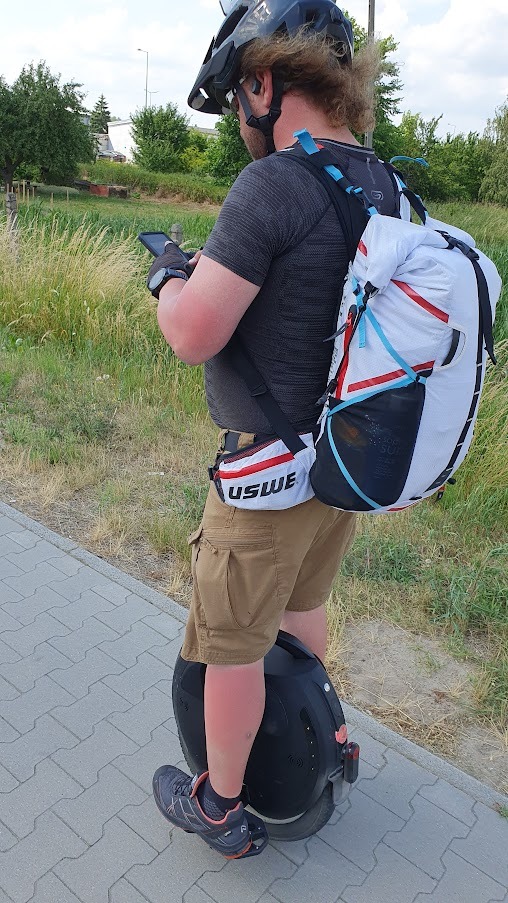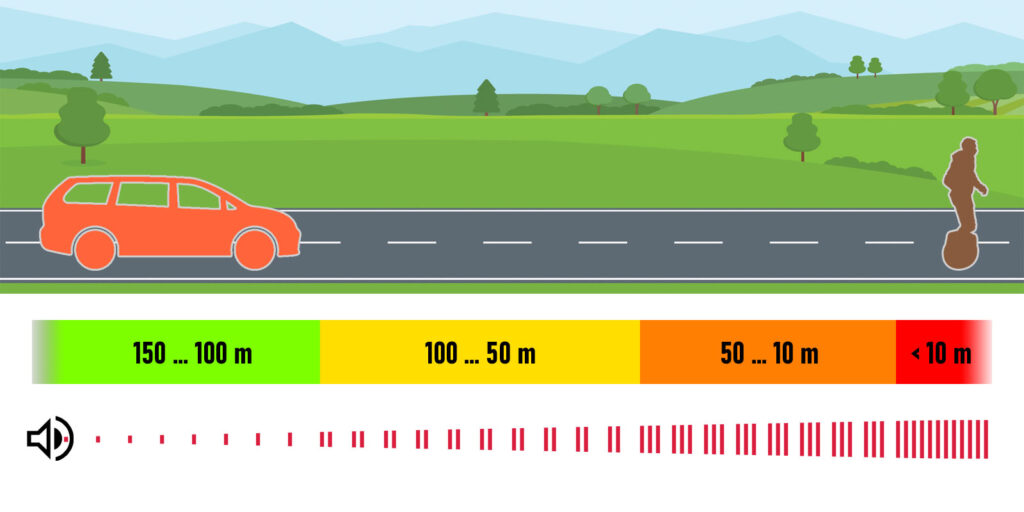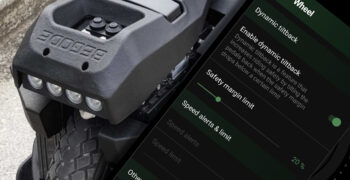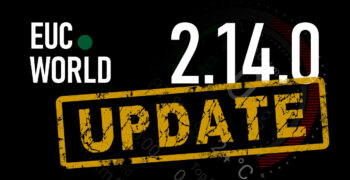We all know very well how important situational awareness is when we ride on roads along with car and motorcycle traffic. While we have excellent visibility in front of us, it is difficult to simultaneously observe the road ahead and what is happening behind us. Popular helmet-mounted or wrist-mounted rearview mirrors help solve this problem to some extent, but this is not the best way to maintain situational awareness. It takes some time to locate the objects in the mirror, it’s also hard to determine distance and approach speed. The solution to the problem is the Garmin Varia™ reverse radar, connected to the EUC World app. This solution takes situational awareness to a completely new level. The mirror is actually no longer needed, so you can focus all your attention on what’s happening ahead. At the same time, thanks to the warning sounds heard in the headphones or intercom, you know all the time what is happening behind you. What is the distance to the car behind you, at what speed is it approaching you, is it following you or preparing to pass etc.
In the photo below you can see me on my King Song 18XL, during my eight-day, 1,100+ km tour across Poland. The radar mount is attached between the rear splash pad and the tail light. Installation and removal of the radar is done in a simple way – by rotating the unit 90 degrees. It should be obvious that the radar is a fully rainproof device. The radar can be tilted up to 15 degrees up and down, so adjusting the angle of the pedals does not affect the radar’s operation. As I’m wearing an open-face enduro helmet, I use Aftershokz Aeropex bone-conduction earphones that works great with EUC World sound & speech features, without blocking sounds coming from outside world.

How it works?
The radar connects via Bluetooth to the EUC World app, constantly sending it information about detected vehicles behind you at a distance of up to 150 meters. Based on this information, EUC World emits warning tones, the volume, pitch and pattern of which indicate the distance and speed of approach. As tests carried out in the United States and during a journey of more than a thousand kilometers through Poland have shown, this method of warning allows you to maintain perfect orientation about what is happening behind you. The warning tones in no way interfere with other sounds, such as speed alerts or voice information. Also, if you use multimedia applications (such as Spotify), the warning tones will be superimposed on the content you are listening to.
What is very important, only based on the characteristics of the warning sound, you can easily assess not only the distance or speed of approach, but also predict the driver’s intentions. Will he or she be following you, driving a long time behind you? When he sees a vehicle in front of you, will he wait for that one to pass you? Or will he try to overtake you anyway, leaving very little room for you? Or will he not overtake at all, but turn somewhere and no longer be a threat? You can figure all this out without interrupting your observation of the road ahead. Just by listening to the tones.
It is important to know that radar only detects objects that are approaching you, eg. are faster than you. If the car behind will maintain the same speed as yours, it will virtually disappear. But as soon as it starts accelerating, it will be signalled again.

Distance
As mentioned earlier, the radar’s warning tones provide information about the vehicle’s distance from you and its approach speed. Since radar information is refreshed many times per second, any changes are communicated almost instantaneously. The distance from the vehicle is presented in two ways at once – by changing the volume of the warning sound and by changing its pattern. This is graphically shown in the image above. When the vehicle is at a distance of more than 100 meters, a single short tone is emitted, repeated continuously at a not-so-loud volume, which increases as the vehicle approaches you. When the vehicle is between 100 and 50 meters away, the sound will change to two short tones. Below 50 meters, the sound will consist of three tones. When the distance drops to less than 10 meters, short tones will be emitted continuously.
Approach speed
The pitch of the warning tones represents the approach speed. A low tone indicates a low, and therefore safe, approach speed. Its increase over time means the vehicle is accelerating, and a decrease (e.g., when approaching you) means slowing down. A high tone means a high approach speed and therefore, for example, the risk of an air blast, for which – thanks to the radar – you can prepare in advance.
Pros and cons
Radar works best on roads with light to moderate traffic. On such roads, when there is no other vehicle around most of the time, it is easy to lose attention, become distracted and less cautious. When, after some time of no traffic, a fast-moving car suddenly appears from behind, it can frighten a rider focused on enjoying the landscapes and not paying adequate attention to the road conditions.
Radar will not work well when riding in heavy urban traffic, as the constantly changing tones will cease to be understandable and meaningful. You should also know that due to the rather wide angle of detection of objects, radar can signal vehicles driving on a road parallel to the one on which you are riding. This is a particularly common case when riding on a bicycle road that lies next to a road on which there is car traffic. Fortunately, you can easily turn radar off and on using quick action, tied to the Flic button or screen tap.
Garmin Varia radars are not cheap devices. Depending on the model, official prices start at €149.99 (RVR315 model, radar only) and go up to €399.99 (RCT715 model, radar with taillight and camera). However, if you ride a lot on roads outside of busy city centers, this expense can significantly translate into your safety. And life and health have no price. However, it is worth noting that in many stores you can buy these devices at much lower prices.
Supported devices
EUC World has been thoroughly tested with the RTL515, however, it should be fully compatible with other radars in the Garmin Varia™ family. The RTL515 seems to be the optimal solution, as in addition to the radar, it also has a very bright rear light that is coupled to the radar. This means that when a vehicle is detected, it starts emitting a very bright flashing light, which significantly increases our visibility even on a bright sunny day. Attaching the radar to the rear of our wheel should not be a problem at all, as the included bracket can be converted as desired.
Supported devices:
- RVR315 (radar),
- RTL515 (radar with tail light),
- RTL516 (radar with tail light, German market version without flash mode),
- eRTL615 (radar with tail light, model designed for permanent installation and external power supply),
- RCT715 (radar with tail light and camera).
Additionally, you will have to use EUC World 2.32.0 or newer and have an active Premium account.



